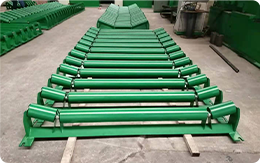 Afrikaans
Afrikaans  Albanian
Albanian  Amharic
Amharic  Arabic
Arabic  Armenian
Armenian  Azerbaijani
Azerbaijani  Basque
Basque  Belarusian
Belarusian  Bengali
Bengali  Bosnian
Bosnian  Bulgarian
Bulgarian  Catalan
Catalan  Cebuano
Cebuano  Corsican
Corsican  Croatian
Croatian  Czech
Czech  Danish
Danish  Dutch
Dutch  English
English  Esperanto
Esperanto  Estonian
Estonian  Finnish
Finnish  French
French  Frisian
Frisian  Galician
Galician  Georgian
Georgian  German
German  Greek
Greek  Gujarati
Gujarati  Haitian Creole
Haitian Creole  hausa
hausa  hawaiian
hawaiian  Hebrew
Hebrew  Hindi
Hindi  Miao
Miao  Hungarian
Hungarian  Icelandic
Icelandic  igbo
igbo  Indonesian
Indonesian  irish
irish  Italian
Italian  Japanese
Japanese  Javanese
Javanese  Kannada
Kannada  kazakh
kazakh  Khmer
Khmer  Rwandese
Rwandese  Korean
Korean  Kurdish
Kurdish  Kyrgyz
Kyrgyz  Lao
Lao  Latin
Latin  Latvian
Latvian  Lithuanian
Lithuanian  Luxembourgish
Luxembourgish  Macedonian
Macedonian  Malgashi
Malgashi  Malay
Malay  Malayalam
Malayalam  Maltese
Maltese  Maori
Maori  Marathi
Marathi  Mongolian
Mongolian  Myanmar
Myanmar  Nepali
Nepali  Norwegian
Norwegian  Norwegian
Norwegian  Occitan
Occitan  Pashto
Pashto  Persian
Persian  Polish
Polish  Portuguese
Portuguese  Punjabi
Punjabi  Romanian
Romanian  Russian
Russian  Samoan
Samoan  Scottish Gaelic
Scottish Gaelic  Serbian
Serbian  Sesotho
Sesotho  Shona
Shona  Sindhi
Sindhi  Sinhala
Sinhala  Slovak
Slovak  Slovenian
Slovenian  Somali
Somali  Spanish
Spanish  Sundanese
Sundanese  Swahili
Swahili  Swedish
Swedish  Tagalog
Tagalog  Tajik
Tajik  Tamil
Tamil  Tatar
Tatar  Telugu
Telugu  Thai
Thai  Turkish
Turkish  Turkmen
Turkmen  Ukrainian
Ukrainian  Urdu
Urdu  Uighur
Uighur  Uzbek
Uzbek  Vietnamese
Vietnamese  Welsh
Welsh  Bantu
Bantu  Yiddish
Yiddish  Yoruba
Yoruba  Zulu
Zulu Design and Analysis of a Carrying Idler Frame for Enhanced Performance
The Importance of Carrying Idler Frames in Conveyor Systems
In the realm of material handling and transport, conveyor systems play a vital role in ensuring the efficient movement of goods. One of the critical components that contribute to the smooth functioning of these systems is the carrying idler frame. This seemingly simple structure is essential for maintaining the integrity and performance of conveyor belts, ultimately impacting the overall productivity of various industries.
Understanding the Carrying Idler Frame
A carrying idler frame is an assembly that supports the conveyor belt between the drive and return pulleys. It consists of a series of idler rollers, which are mounted on a frame and positioned at specific intervals along the length of the conveyor. These frames are typically made of sturdy materials such as steel or aluminum to withstand the operational loads and environmental conditions they face.
The primary function of the carrying idler frame is to support the weight of the conveyor belt and the material being transported. By providing a stable base, the frame helps to ensure that the belt runs smoothly and reduces the risk of sagging or misalignment. This is crucial because any deformation in the belt can lead to increased wear and tear, reduced efficiency, and potential breakdowns.
Key Benefits of Carrying Idler Frames
1. Load Distribution Carrying idler frames are designed to evenly distribute the load across the conveyor system. This alleviates excessive stress on any single point along the belt, promoting a longer lifespan for both the belt and the idler rollers.
carrying idler frame

2. Improved Efficiency A well-designed carrying idler frame can enhance the overall efficiency of the conveyor system. By minimizing friction between the belt and the idler rollers, these frames enable smoother belt movement, reducing energy consumption and wear on components.
3. Regulation of Belt Tension The proper tension of the conveyor belt is crucial for its optimal performance. Carrying idler frames help maintain the correct tension, preventing slippage and ensuring that the belt remains in alignment. This regulation is vital for processes such as loading and unloading materials.
4. Minimized Downtime Downtime can be costly in any industry. By ensuring that the conveyor operates smoothly, carrying idler frames contribute to reducing maintenance needs and downtime associated with repairs. This reliability is especially important in industries where continuous operation is essential, such as mining, manufacturing, and packaging.
5. Adaptability Carrying idler frames can be adapted to various conveyor types and configurations. Whether in a straight line or a curved design, these frames can be customized to meet the specific requirements of different materials and operational environments.
Conclusion
In summary, carrying idler frames are a critical component of conveyor systems, significantly impacting their efficiency and longevity. By providing support, distributing loads, and maintaining proper belt tension, these frames play a pivotal role in the smooth operation of material handling processes across various industries. As technologies advance and industries evolve, the design and functionality of carrying idler frames will continue to adapt, further enhancing their importance in modern conveyor systems.
Investing in high-quality carrying idler frames can lead to improved operational efficiency, reduced maintenance costs, and ultimately a better bottom line for companies relying on conveyor systems for their material handling needs. As industries increasingly seek to optimize their processes, understanding the role of components like the carrying idler frame becomes crucial for achieving operational excellence.
-
Revolutionizing Conveyor Reliability with Advanced Rubber Lagging PulleysNewsJul.22,2025
-
Powering Precision and Durability with Expert Manufacturers of Conveyor ComponentsNewsJul.22,2025
-
Optimizing Conveyor Systems with Advanced Conveyor AccessoriesNewsJul.22,2025
-
Maximize Conveyor Efficiency with Quality Conveyor Idler PulleysNewsJul.22,2025
-
Future-Proof Your Conveyor System with High-Performance Polyurethane RollerNewsJul.22,2025
-
Driving Efficiency Forward with Quality Idlers and RollersNewsJul.22,2025





























